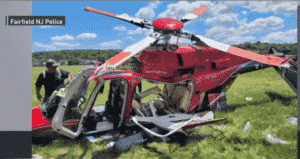BEWARE OF OLD AIRPLANES – OLD CESSNA CITATION CRASHES IN THE BALTICS KILLING 4 AND AN EVEN OLDER DEHAVILLAND OTTER CRASHES IN SEATLLE KILLING 9
Old airplanes by definition have been around for a long time. There is something charming about flying in a vintage airplane put to use in romantic settings.
There’s a problem though. Old airplanes break a lot! No matter how much maintenance, how many modifications, upgrades and replaced parts there have been old airplanes just fail more frequently than new ones do and new ones fail a lot.
The problem with old airplanes is that seals get dry, gaskets rot, rubber parts harden and crack, composite parts wear out and even metal gets fatigue from expansion and contraction due to temperature changes and pressure changes and simply from moving and working the metal into brittleness.
Often, modifications are made through STC’s, a process that allows changes to an airplane with much less scrutiny than the original certification process which is bad enough, often allowing the manufacturers themselves, through the honor system, to essentially certify their own aircraft.
The Cessna Citation 501 has been around since the 1970’s and pressurization problems were reported in this aircraft.
Oxygen masks should have been sufficient for the crew to have landed without incident but for some reason the pilot chose to fly in a circuitous route before crashing into the sea. Oxygen deprivation is serious business and the outcomes are usually not good. Pressurization in light jets is accomplished by taking air off the engines and sending it into the front of the cabin and controlling its exit through outflow valves in the rear. The failure of either the entry controls or exit controls means pressurization failure which can mean loss of useful consciousness in as little as 20 seconds. Quick donning of the oxygen masks for the crew and a sufficient supply of oxygen for everyone is critical.
The De Havilland Otter is the workhorse airplane for odd places. It carries a lot, like 9 people or more and loads of cargo. In fact, it has so many STC’s its hard to count the many ways that it has been modified to carry more revenue producing people and cargo. Its engine was a turbine so the aircraft’s
old reciprocating engine was replaced with a much newer turboprop which would allow it to carry even more people and freight. The airplane however was sixty years old or more. Lots of them have been modified with floats or skis so they can be landed on water, ice and snow. They have been used safely for decades. But they also crash a lot because of the harsh environments in which they are used.
The Wolk Law Firm represents the families of a tragic fatal accident in Homer Alaska where the float of a De Havilland Beaver ( a smaller version of the Otter) became detached during takeoff causing the airplane to cartwheel and sink. The float was almost new, the attaching wires were almost new but because of poor and inadequate design the old airplane crashed. As an Airplane Transport Pilot Single and Multi-Engine Sea, I can say that taking off and landing on water can be challenging especially when things go wrong. While most think water is soft, it has little compressibility and can be as hard as concrete so a walk-away from a seaplane crash is no guarantee. Moreover, seaplanes operate in harsh and typically salty environments which wreaks havoc on metal parts. Salt can corrode metal spars and other aluminum parts so they are understrength. One multi-engine seaplane crashed in Florida killing all aboard because of corrosion of its main wing spar and a wing fell off.
The NTSB recovered much of the wreckage of the Otter and did find a failed stabilizer trim part that can explain the loss of control. The horizontal stabilizer is used to provide pitch stability and to trim pitch forces by moving its leading edge up or down. Disconnection can result in loss of pitch control which has happened before in other aircraft including an Alaska Airlines MD-80 that crashed into the Pacific years ago.
Old airplanes are difficult to maintain and fail catastrophically. The airlines learned this and renew their fleets more frequently now.
There is no coincidence that both were very old and old airplanes just like people don’t live forever.
There is no doubt that inadequate maintenance will have contributed to these accidents and perhaps defective design or manufacture. No airplane accident has one cause.
To the families of those who did not survive, may their memories be a blessing.
Arthur Alan Wolk
September 5, 2022
For more commentaries click here.


